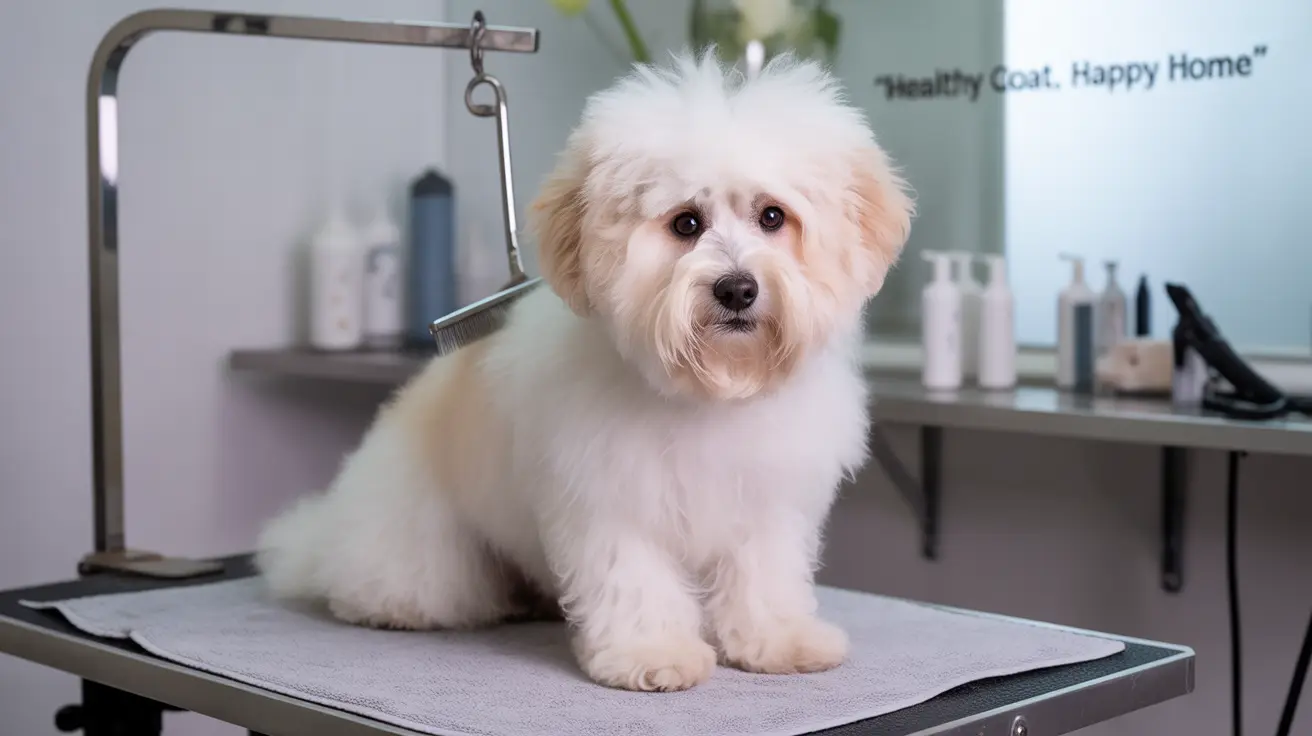For many people with allergies, the dream of owning a dog seems out of reach. The term "hypoallergenic dogs" has become increasingly popular, offering hope to allergy sufferers who long for canine companionship. However, it's crucial to understand what this term really means and to separate fact from fiction.
Despite common misconceptions, no dog breed is completely allergen-free. All dogs produce proteins that can trigger allergic reactions, primarily through their dander, saliva, and urine. However, certain breeds, known as allergy-friendly dogs, produce significantly fewer allergens and shed less, making them more suitable companions for people with pet allergies.
This comprehensive guide will explore the reality of hypoallergenic dogs, examine the best breeds for allergy sufferers, and provide essential information about managing pet allergies effectively.
Understanding Hypoallergenic Traits in Dogs
The key factor that makes a dog more suitable for allergy sufferers lies in their coat type and shedding patterns. Dogs with low-shedding coats typically spread less dander throughout the home, reducing the likelihood of allergic reactions. Additionally, breeds with curly or wavy hair often trap dander more effectively, preventing it from becoming airborne. This means that even though these dogs are not completely free of allergens, their physical traits can help keep potential triggers under control. Regular grooming and maintenance of their coats play an important role in keeping allergies at bay.
Best Hypoallergenic Breeds by Size
Small Hypoallergenic Dogs
Small hypoallergenic dogs are especially popular among urban dwellers and those living in apartments. Despite their petite size, they can make loving and energetic companions while being more manageable for individuals with allergies. Some notable examples include:
- Yorkshire Terrier: Perfect for apartment living, the Yorkshire Terrier sheds minimally and has a fine, silky coat, making it easier to manage allergens. They are also known for their affectionate personalities and adaptability.
- Maltese: Frequently chosen by allergy sufferers, Maltese dogs require regular grooming to maintain their beautiful coats but tend to produce fewer allergens thanks to their low-shedding hair. These dogs are friendly, lively, and fit well in most households.
- Bichon Frise: This cheerful dog sports a curly, hypoallergenic coat that efficiently traps dander, making them an excellent option for those with sensitivities. Their playful and affectionate nature makes them wonderful pets for families.
- Shih Tzu: An ancient breed, Shih Tzus have long, luxurious hair that requires diligent care. Their coat helps contain dander, contributing to their reputation as an allergy-friendly breed. They are also known for their loyal and sweet disposition.
Medium Hypoallergenic Dogs
For active households or those seeking a dog with more stamina, medium-sized hypoallergenic breeds are an excellent choice. These dogs offer a balance of energy, manageable size, and allergy-friendly qualities:
- Portuguese Water Dog: Athletic and energetic, this breed has a water-resistant coat that sheds very little, making it well-suited for owners with allergies. Portuguese Water Dogs are also highly intelligent and trainable, thriving in dynamic environments.
- Soft Coated Wheaten Terrier: Known for their silky, soft coats, these terriers are both energetic and affectionate. Their wavy hair is less likely to release dander, though regular grooming is essential to maintain its hypoallergenic properties.
- Lagotto Romagnolo: This lesser-known breed is sturdy, affectionate, and recognized for its dense, curly coat that helps retain dander. Lagotto Romagnolos are excellent companions for those seeking an active but allergy-friendly dog.
Large Hypoallergenic Dogs
Many people believe that large dogs cannot be hypoallergenic, but several breeds prove otherwise. These breeds are well-suited for active families or individuals needing a more substantial dog while still being mindful of allergies:
- Standard Poodle: Renowned for their intelligence and trainability, Standard Poodles have tight, curly coats that shed minimally and do not easily release dander. Their versatility and friendly nature make them popular service and family dogs alike.
- Giant Schnauzer: This powerful breed combines strength with an allergy-friendly wiry coat. The Giant Schnauzer is also loyal and protective, making it a fantastic companion for those looking for a large, low-allergen pet.
- Afghan Hound: With their elegant appearance and flowing coat, Afghan Hounds have hair more similar to humans than traditional dog fur. This makes them less likely to cause allergic reactions, provided their grooming needs are met.
The Role of Breeding in Hypoallergenic Traits
Breeding for hypoallergenic traits has played a significant role in expanding options for allergy sufferers. Some crossbreeds have been developed specifically to minimize allergenic properties while still offering desirable behavioral traits. The Labradoodle, created by crossing a Labrador Retriever with a Poodle, is a prime example—originally designed to serve as a guide dog suitable for people sensitive to allergens. Other poodle-mix dogs, such as Goldendoodles and Cockapoos, often inherit the poodle’s low-shedding, curly coat, reducing the spread of dander.
However, it is important to note that breeding cannot guarantee a completely hypoallergenic pet. Allergen production varies even within the same breed or litter, so spending time with an individual dog before adopting is crucial to assess compatibility with your allergies.
Grooming and Allergen Management
Proper grooming is essential for maintaining the hypoallergenic benefits of these breeds. Regular brushing, bathing, and professional grooming help remove loose hair and dander, significantly reducing the amount of allergens in your living environment. Bathing your dog as recommended by your veterinarian can also help to keep dander levels down, while grooming tools designed for specific coat types can make maintenance more efficient.
Besides coat care, maintaining a clean home environment is equally important. Frequent vacuuming, using HEPA air filters, and regularly washing your dog's bedding can contribute to minimizing allergens in your home. Creating a comprehensive grooming and cleaning routine is crucial for successful dog ownership with allergies.
Choosing the Right Dog for Allergy Sufferers
Selecting the right dog involves more than just picking a hypoallergenic breed. Prospective owners should carefully assess several factors to ensure a good match with their needs and lifestyles:
- Living space and lifestyle requirements: Some dogs are better suited for apartments, while others require more room and daily exercise. Consider the energy level and space requirements of the breed.
- Grooming commitment level: Hypoallergenic breeds often require ongoing grooming, which demands time and attention from the owner. Make sure you are prepared for this commitment.
- Individual allergic sensitivity: Allergy reactions vary from person to person. It’s wise to spend time with the specific breed or even individual dog before making a final decision.
- Time available for exercise and care: Dogs, regardless of breed, need regular exercise and interaction. Consider how much time you can devote to their well-being to keep both your pet and your allergies under control.
Frequently Asked Questions
- Are any dog breeds truly hypoallergenic? No breed is completely hypoallergenic, but some produce fewer allergens.
- What causes dog allergies in humans? Dog allergies are mainly triggered by dander, saliva, and urine proteins.
- Which breeds are best for allergy sufferers? Poodles, Bichon Frise, Schnauzers, and Maltese are popular hypoallergenic choices.
- Do hypoallergenic dogs require special grooming? Yes, regular grooming helps reduce allergens and matting.
- Can large breeds be hypoallergenic? Yes, breeds like standard poodles and giant schnauzers are options.
- Are mixed breeds like Labradoodles good for allergies? Many Labradoodles are suitable, but allergen levels can vary.
- Does low-shedding mean hypoallergenic? Not always, but low-shedding breeds often spread fewer allergens.
- How can I reduce allergens with a dog at home? Frequent cleaning, air filters, and grooming lower allergen levels.
- Are there rare hypoallergenic dog breeds? Yes, breeds like Lagotto Romagnolo and Bedlington Terrier are less common.
- Should allergy sufferers spend time with a dog before adopting? Yes, testing reactions is crucial before bringing a dog home.
Conclusion
While no dog is completely hypoallergenic, understanding the characteristics of different breeds and implementing proper management strategies can help allergy sufferers successfully share their lives with canine companions. The key is finding the right balance between breed selection, grooming commitment, and allergen management techniques. By taking these factors into consideration, allergy sufferers can enjoy the many benefits of dog ownership while minimizing allergic reactions and enhancing their overall quality of life.






